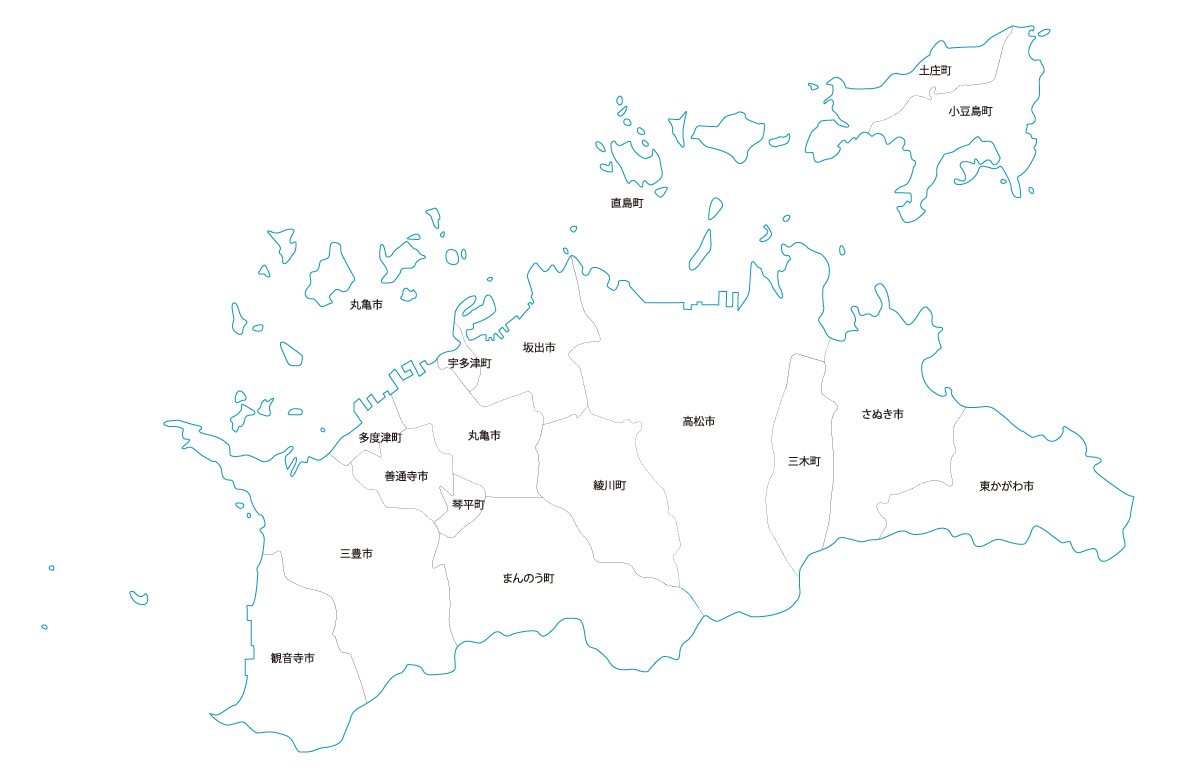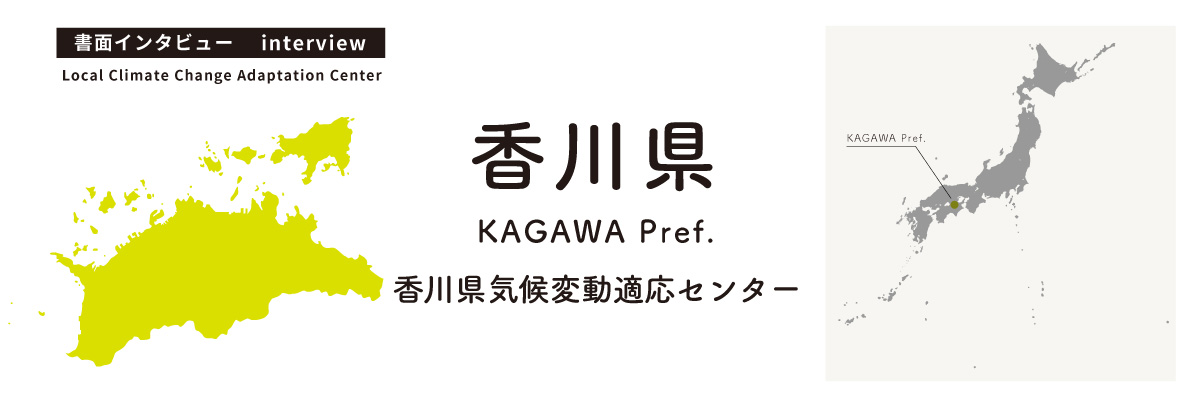Please tell us about Kagawa Prefecture’s unique local features and characteristics, what led to the establishment of the Local Climate Change Adaptation Center, and what its organizational structure is like.
Kagawa Prefecture is historically known for its year-round warm temperature and low precipitation, which are typical characteristics of the Seto Inland Sea climate, with relatively low natural disaster incidence. In recent years, however, the prefecture has seen unprecedented occurrences of heavy rain, high heat, and other extreme weather events resulting in significant amounts of reported damage. As climate change has apparently been manifesting its effects in a whole host of other areas, the necessity to implement proper adaptation measures is becoming increasingly obvious. Therefore, we established the Kagawa Prefectural Climate Change Adaptation Center at the Kagawa Prefectural Research Institute for Environmental Sciences and Public Health (hereinafter referred to as the “RIESPH”) in order to improve the prefecture’s information platform concerning climate change impact and adaptation and to facilitate the local implementation of adaptation measures through information provision to prefectural residents and business operators.
In terms of its organizational structure, the Center is headed by the Director of the RIESPH and operated by six other researchers (that are employees of both organizations) in the form of an internal working group cooperating with the Environmental Policy Division of the prefectural government.

Please tell us about the current activities of Kagawa’s Local Climate Change Adaptation Center as well as its future plans.
Since FY 2020, we have been participating in a climate change adaptation study jointly conducted with the National Institute for Environmental Studies, making meteorological observations of extreme heat conditions. For this fiscal year, we installed WBGT meters at two different locations (high schools in urban and suburban settings) in the prefecture, at various points such as classrooms, playgrounds, and gymnasiums, and have been measuring WBGT, temperature, humidity, etc. In addition, we have been gathering data on the number of hyperthermia cases involving ambulance services in various parts of the prefecture to elucidate their correlation with WBGT so that our findings could be used to improve hyperthermia prevention.
Furthermore, since FY 2021, we have been participating in the Commissioned project with public participation consisting in the collection and analysis of information on climate change, which involves gathering of not only information conducive to hyperthermia prevention and extreme heat alleviation as explained above but also information in agriculture through a questionnaire survey of agricultural instructor, etc. concerning any climate change impacts they had felt on crops being grown in the prefecture. This survey revealed that the effects of climate change on crops were becoming more pronounced in various parts of the prefecture, manifesting as higher incidences of diseases and pests damaging crops, deterioration of agricultural conditions, etc. We also conducted a series of interviews with farmers growing olive, garlic, and other prefectural specialties and were able to obtain valuable information including their candid opinions on the effects of climate change and adaptation measures that were unique to the region, etc.
In addition, we held our first climate change workshop for prefectural residents in November this year. Although the event was offered online to prevent novel coronavirus infection this year, we saw participants actively exchange opinions and ideas on the sample cases of climate change impacts and readily available adaptation measures that were reported at the event.
As for future plans, we are intent on gathering wide-ranging information concerning natural disasters and the impacts of climate change being felt in the industrial sector, etc. in addition to our ongoing monitoring in public health and agriculture in order to formulate adaptation measures that are suitable for our regional characteristics and to predict future trends, etc.
Please tell us about any unique approach that your Local Climate Change Adaptation Center is taking to effectively coordinate with other departments of the Kagawa Prefectural Government and to facilitate adaptation by the prefecture and businesses, as well as any issues, etc. you are experiencing.
At the Kagawa Prefectural Climate Change Adaptation Center, we have been exchanging information on climate change impacts with various testing and research bodies that are based in the prefecture while gathering information from the field directly that relates to agriculture, fishery, forestry, etc. In addition, we communicate with other research institutes about lectures, seminars, and other events concerning climate change to improve our knowledge.
Under the supervision of the Environmental Policy Division of the Kagawa prefectural government, a working group (“WG”) has been formed to facilitate information sharing and discussion on potential adaptation measures and review the prefecture’s adaptation measures involving different prefectural departments for the formulation of Kagawa’s local climate change adaptation plan, and we have been developing a framework in which all concerned prefectural departments can cooperate with each other for our common objectives.
As for any issues we must continuously work on, we need to have prefectural residents and business operators become more interested in climate change and adaptation. At the moment, we feel that the urgency of climate change is still not quite resonating with them. So, to have them recognize more that climate change affects them in their everyday lives, we are intent on improving our information provision through our Center’s newsletters, website, etc.
Please tell us what motivates you to do your current work and also your outlook on the future.
Although Kagawa Prefecture is known to have a low incidence of natural disasters and a temperate climate all through the year, the impact of climate change is slowly but surely manifesting. So we intend to provide prefectural residents and business operators with detailed yet digestible information on the effects of climate change occurring in this region, with the hope that it would help ease their social and economic burdens.
As climate change affects a whole host of areas, the activities of our Center alone are not enough to address them all. However, we intend to visit various parts of the prefecture to hear the candid opinions of residents and businesses on climate change and actively disseminate information on adaptation activities in conjunction with the Environmental Policy Division of the prefectural government, while predicting climate change in different parts of the prefecture and providing other science-based support attentively.
(Posted on March 16, 2022)


